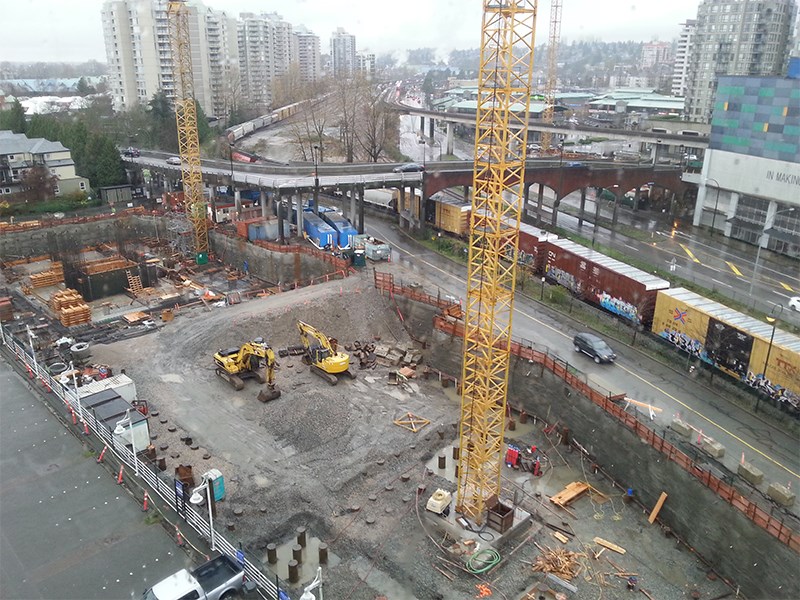It is a relationship that many could question, some might deny and others may oppose. But, according to a recent Green Jobs BC conference, marrying a healthy environment with long-term, well-paying sustainable jobs is something everyone will need to accept in order to stem the flow of greenhouse gases being released into the atmosphere.
Green Jobs BC is a coalition of BC Federation of Labour, Hospital Employees’ Union, BC Government and Services Employees’ Union, Sierra Club, David Suzuki Foundation, Pembina Institute, Columbia Institute, The Tyee and Canadian Centre for Policy Alternatives.
“We have to make sure that the work that has to be done benefits workers and their families,” said BC Federation of Labour president Irene Lanzinger at the recent Jobs Today, Jobs Tomorrow conference held in New Westminster. “There should be nothing about us without us.”
Comparisons were made to the current quest to protect oil, gas and mining-related jobs.
According to BC Stats, oil, gas and mining account for only 3.4 per cent of BC’s gross domestic product, and the BC Ministry of Finance states 1.2 per cent of the workforce in BC works in the industry.
The BC government received a Bold Green Jobs Plan from Green Jobs BC three years ago. Since then, there has been very little uptake.
Powell River-Sunshine Coast MLA Nicholas Simons said mega-projects, such as Site C Dam or Kinder Morgan pipeline, receive a lot of attention, yet it is the smaller projects that draw communities together and provide sustainability through local job creation.
“Mega-projects may result in a net increase in temporary jobs, but they are temporary and I would rather people work in their communities rather than in work camps,” he said. “When we have British Columbians employed in rural communities as well as urban communities, and not just in clusters around mega-projects, I think that provides more balance.”
At the foundation of the conference were five pillars. Each pillar represented an opportunity for the green economy.
A strengthened, sustainable forestry industry matched with local value-added manufacturing was targeted by the Green Jobs BC conference. This moves away from the export of raw logs and toward jobs and skills developed within communities such as Powell River.
“We have had some good, strong, value-added companies in town that are smaller—wood interior businesses, furniture businesses, cabinetry,” said City of Powell River manager of economic development Scott Randolph. “They employ a good number of people at a good rate. We would love to see some more of that.”
Simons said he would like to see a move away from raw log exports. “The public does not like the fact we do a lot of the resource extraction, but not enough of the value-added,” he said.
Another green economy focus is on the building trades, especially retrofits for energy-efficient buildings, high-density developments, passive houses and using local or made-in-BC products.
“Energy-efficient retrofits create twice as many jobs as building a new dam and retrofit jobs are close to home in every community across BC,” said Simons.
A third pillar of focus is transportation. The move is away from individual gasoline-fuelled cars and toward enhanced public transit, cycling and walking paths. Powell River has seen a small injection of funds to assist with this transition, which could include smaller, accessible transit vehicles with more frequent schedules.
Fourth is the clean technology industry. This includes telecommuting, research and development of renewable energy products such as solar panels, wind turbines, geothermal heat exchanges, and wave power generation, film industry jobs such as animation and special effects, et cetera.
The fifth is movement toward a clean economy. This pillar includes waste reduction and diversion, industrial cleanup and pollution mitigation, national coal phase-out, which is currently happening, and use of biofuel to meet the clean fuel standard, among other initiatives.
Powell River Regional District’s resource-recovery centre, to be established at the old incinerator site above Willingdon Beach, will help the community sort its waste into renewables, reusables and recyclables.
“If we can focus on biodiversity and do everything to promote biodiversity, and if we see all our social programs through the eyes of a child, we have a better perspective on everything,” said Simons.
Local community groups, such as Climate Action Powell River, have formed to make sure action to reduce the city’s carbon footprint is taken. The sustainability charter, Integrated Community Sustainability Plan, and Sustainable Official Community Plan are a map for the city to follow toward a green economy.
Randolph said each provides some “boundaries and guidelines on how we want to see the city develop in the future.”
Also, the city’s resident-attraction campaign, launched in 2015, focuses on telecommuters, people who could do their work from anywhere, as well as entrepreneurs with a business idea that is not attached to a huge carbon footprint.
“I categorize food as the new energy sector,” said Randolph. “There is an opportunity here; not just terrestrial farming, there is seafood as well. On land aquaculture is sustainable, it preserves wild stocks and provides food for domestic market as well as international.”
The main takeaway from the Green Jobs BC conference was reinforcement that change begins at home. According to experts at the conference, embracing the green economy is not a road full of dread, fear and destitution, but instead a pathway of resilience, hope and excitement that everyone can walk.



